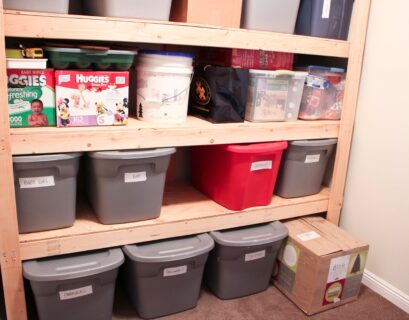Running a household smoothly is a team effort, and assigning specific tasks to each family member can make a significant difference. By clearly defining responsibilities, you can create a more organized, efficient, and harmonious home. Here’s how to effectively delegate tasks and ensure everyone contributes to maintaining the household.
The Benefits of Task Assignment
- Promotes Responsibility: Assigning tasks helps family members, especially children, learn accountability and the importance of contributing to the household.
- Increases Efficiency: With everyone knowing their specific duties, tasks are completed more efficiently and effectively.
- Reduces Stress: Distributing chores evenly prevents any one person from feeling overwhelmed, reducing overall stress in the household.
- Teaches Life Skills: Performing household chores teaches valuable skills that family members will use throughout their lives.
- Fosters Teamwork: Working together on household tasks can strengthen family bonds and foster a sense of teamwork.
Steps to Assign Specific Tasks
- Assess the Household Needs Start by making a list of all the tasks that need to be done regularly. This includes daily chores like washing dishes and taking out the trash, as well as weekly tasks like vacuuming and laundry.
- Consider Abilities and Preferences Take into account the abilities and preferences of each family member. Assign tasks that are age-appropriate and align with individual strengths and interests. For example, younger children can handle simpler tasks like picking up toys, while older kids can take on more complex chores like mowing the lawn.
- Create a Chore Chart Develop a chore chart that clearly outlines each family member’s responsibilities. Use a whiteboard, a printed template, or a digital tool to make it visible and accessible. Color coding can help differentiate tasks and make the chart more user-friendly.
- Set Clear Expectations Be specific about what each task entails and how it should be completed. Providing clear instructions helps ensure that chores are done correctly and efficiently. For example, “clean the kitchen” might include wiping down counters, loading the dishwasher, and sweeping the floor.
- Establish a Routine Create a routine by scheduling when each task should be done. Consistency helps form habits, making it easier for family members to remember and complete their chores. For instance, set specific days for laundry, vacuuming, and trash collection.
Tips for Successful Task Assignment
- Involve Everyone in the Process Get input from all family members when creating the chore chart. This encourages buy-in and ensures that everyone feels heard and valued. Hold a family meeting to discuss the tasks and get everyone on board.
- Rotate Tasks To keep things fair and prevent monotony, rotate tasks regularly. This ensures that no one gets stuck with the same chores all the time and everyone learns a variety of skills.
- Provide Training and Support Take the time to teach family members how to perform their assigned tasks properly. Offer guidance and support as needed, especially for younger children or when introducing new chores.
- Use Positive Reinforcement Recognize and reward effort and completion of tasks. Praise, small rewards, or a family outing can motivate family members to stay committed to their responsibilities.
- Be Flexible and Adapt Life is unpredictable, and sometimes schedules need to change. Be flexible and willing to adjust the chore chart as necessary. Regularly review and update the chart to reflect any changes in the household’s needs.
Sample Chore Chart
Here’s an example of how a weekly chore chart might look:
| Family Member | Monday | Wednesday | Friday |
|---|---|---|---|
| Mom | Cook Dinner | Grocery Shop | Laundry |
| Dad | Mow Lawn | Take Out Trash | Clean Garage |
| Older Child | Vacuum Living Room | Clean Bathroom | Wash Dishes |
| Younger Child | Set the Table | Pick Up Toys | Water Plants |
Encourage Team Effort
Promote a sense of teamwork by encouraging family members to help each other with their tasks when needed. This not only ensures that chores get done but also strengthens family bonds. For example, siblings can work together to clean the kitchen, or parents can assist children with more challenging tasks.
Conclusion
Assigning specific tasks to each family member is a practical way to manage household responsibilities and create a more organized and harmonious home. By assessing the needs, considering abilities, and establishing a clear routine, you can ensure that everyone contributes effectively. Implement these strategies to share the load and enjoy the benefits of a well-coordinated household.











